Meet WalkGood LA, a wellness community that’s about racial equity and healing
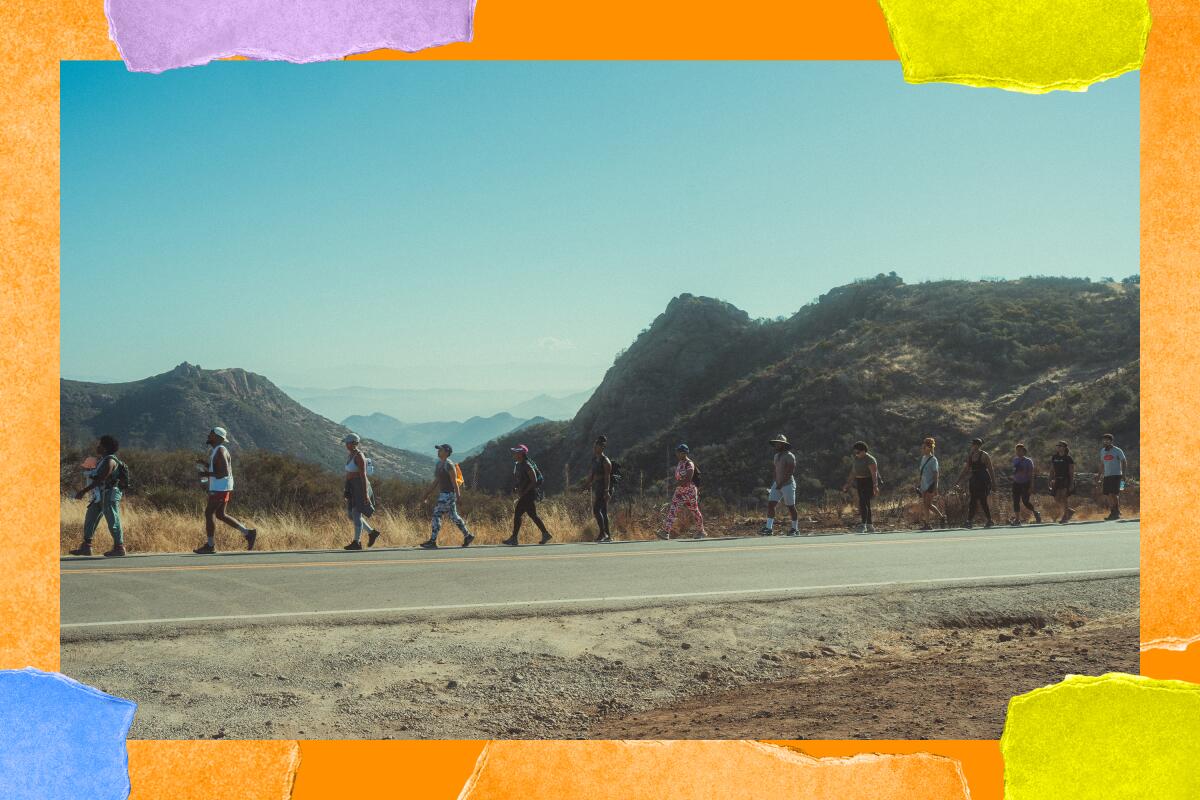
In 2020, when protests over the death of George Floyd grew in cities and towns across the country, Etienne Maurice was inspired to organize his own at L.A. High Memorial Park in Brookside. He was also inspired to stretch before the protest started, so he asked his yoga instructor cousin Marley Ralph to lead those assembled in a short exercise session.
Maurice said a light bulb went off that day, and the day after Juneteenth 2020, he led a yoga class called “BreatheGood” for about 25 people in that same Brookside park. Soon, more than 300 people were joining Maurice — enough that the group moved to the more expansive Kenneth Hahn State Recreation Area to spread out.
As the protest group’s goals and methods expanded, Maurice changed the name to “WalkGood LA,” an homage to his Jamaican grandmother who would remind Maurice to “walk good” — to take care of himself and others — every time he left the house.
Maurice told me he “couldn’t even touch (his) toes” when he started this, but the goal was always more than simple fitness. “I think for a very long time, people of color have been pushed aside from wellness activities,” he told me. “Now we’ve evolved into a wellness collective and wellness community for all people.” In addition to BreatheGood, the group also runs a 5k in the Miracle Mile every week called RunGood; HikeGood takes people onto local trails; and YouGood? offers a Black men’s healing circle with meditation practice.
Many attendees have never been to an event like this before. They may not have ever been given the space or permission to express their feelings or open up to others face to face, and there can be true breakthrough moments. During the final savasana yoga pose, he says it’s not uncommon to hear sobbing from those assembled: “It’s just that collective release that we don’t know that we need.”
When asked about the evolution of WalkGoodLA, Maurice remembers a phrase from the protests. “A lot of the chants were people saying this is a movement, not a moment. We’re one of the very few organizations that have grown and remained consistent with our mission in providing healing safe spaces for all people in Los Angeles.”
The group is holding its final BreatheGood class of the year on Sunday, Dec. 18. Find more info on its Instagram.
I spoke to Maurice about how everyone deserves nature, the sense of freedom it brings him, and the importance of finding the thing that brings you joy.

What does being in nature mean for you?
Being in nature means “freedom” to me. I used to think being in nature was very hippie-ish. But there is a sense of freedom that I feel when I’m in nature.
What’s a place that inspires you and why?
Kenneth Hahn State Park is a place that inspires me. Every Sunday we’re out there doing yoga. This is the park I grew up going to as a kid, and to be able to come back there every Sunday as an adult offering spaces of healing inspires me every day.
If you could change one thing about the way people think of nature, what would it be?
I would change the idea that nature is just for one type of person. Nature is for everyone, and it is our right to experience it. Because it’s everywhere. Nature is ours. It’s embedded in the fiber of our being. Why not try something that’s out there? Why not try something that is available when you walk outside your door? I would encourage people to try, because you deserve it.
What’s your personal can’t-live-without item when you’re outside?
My water bottle, my water bottle, my water bottle is what I need anytime I’m on a hike or doing yoga.
What’s your number one tip for people who want to strengthen their relationship with nature?
Find your thing, find your practice and give yourself grace. If you look at it like a chore, like a homework assignment, you’re not going to enjoy it. Find something that brings you joy and you’re going to want to do it forever.
3 things to do
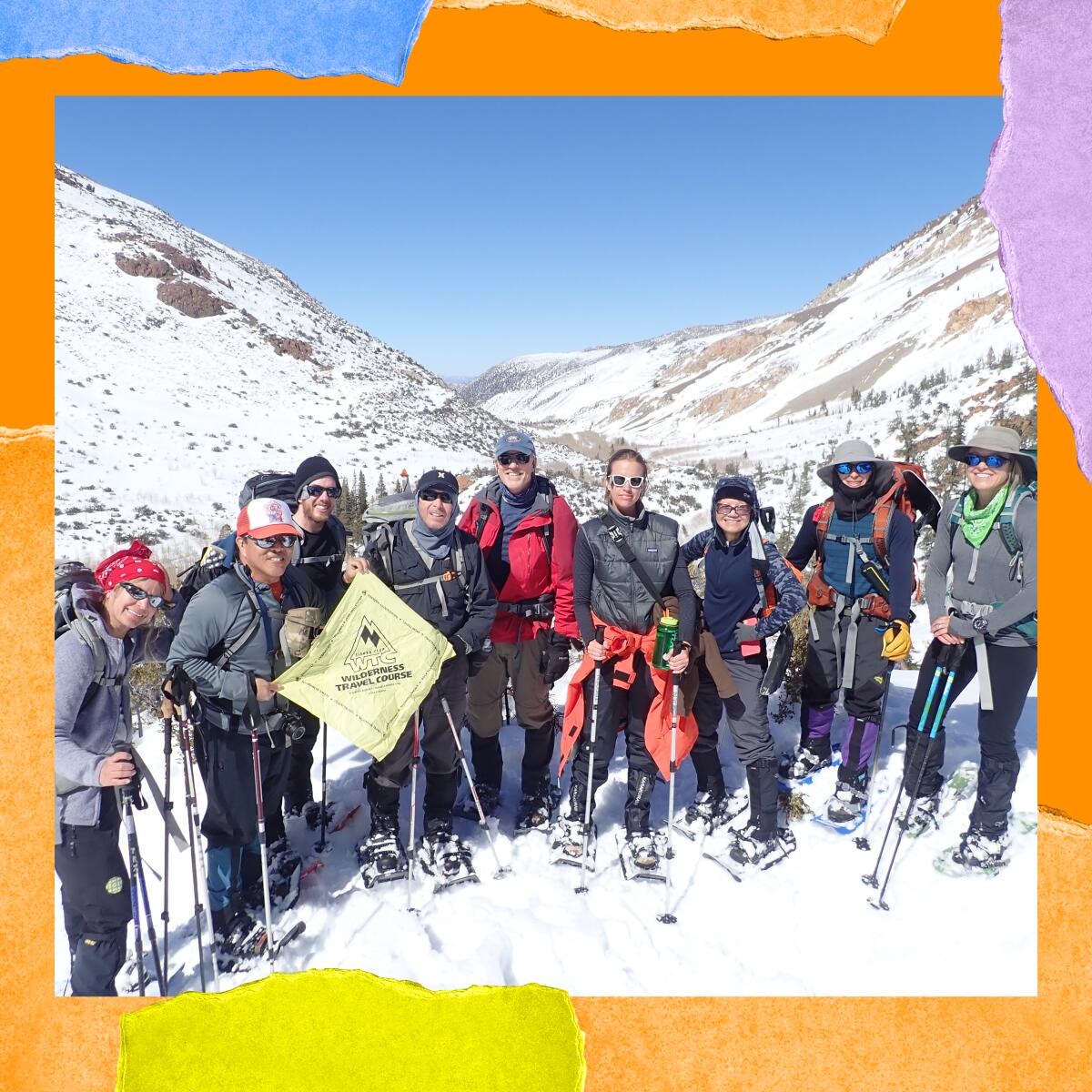
1. Sign up for the Wilderness Travel Course. Today, Dec. 15, is the last day to sign up for the Sierra Club’s iconic Wilderness Travel Course at a discounted “early application” price. If you have been wanting to learn survival and navigation skills, explore more of Southern California’s backcountry and meet dozens of like-minded outdoor adventurers, this is your jam. The course consists of 10 classroom sessions and four weekend outings, and you’ll learn how to pack a bag properly, navigate with map and compass, snow camp and lots more. Literally everyone I know who’s taken this class won’t stop telling me how much they loved it. You don’t need to be a member of the Sierra Club to join (although the price is lower if you are). The cost goes up Dec. 16, and spots are limited, so pull that proverbial trigger! Early application fees range from $420-$455; prices go up to $435-$470 after Dec. 15.
Get The Wild newsletter.
The essential weekly guide to enjoying the outdoors in Southern California. Insider tips on the best of our beaches, trails, parks, deserts, forests and mountains.
You may occasionally receive promotional content from the Los Angeles Times.

2. Check out a winter solstice art show. If you’re looking for gifts this time of year, forget the mass-produced knickknacks and instead head to the Satwiwa Native American Indian Culture Center at Sycamore Canyon on Sunday, Dec. 18, for its Winter Solstice Art Show and Sale. From 10 a.m. to 3 p.m., more than a dozen artists will show and sell artwork from Chumash, Tongva, Cahuilla and other Native American cultures. The event will also feature a number of storytelling and music sessions. You can reserve a spot on Eventbrite for this free event.
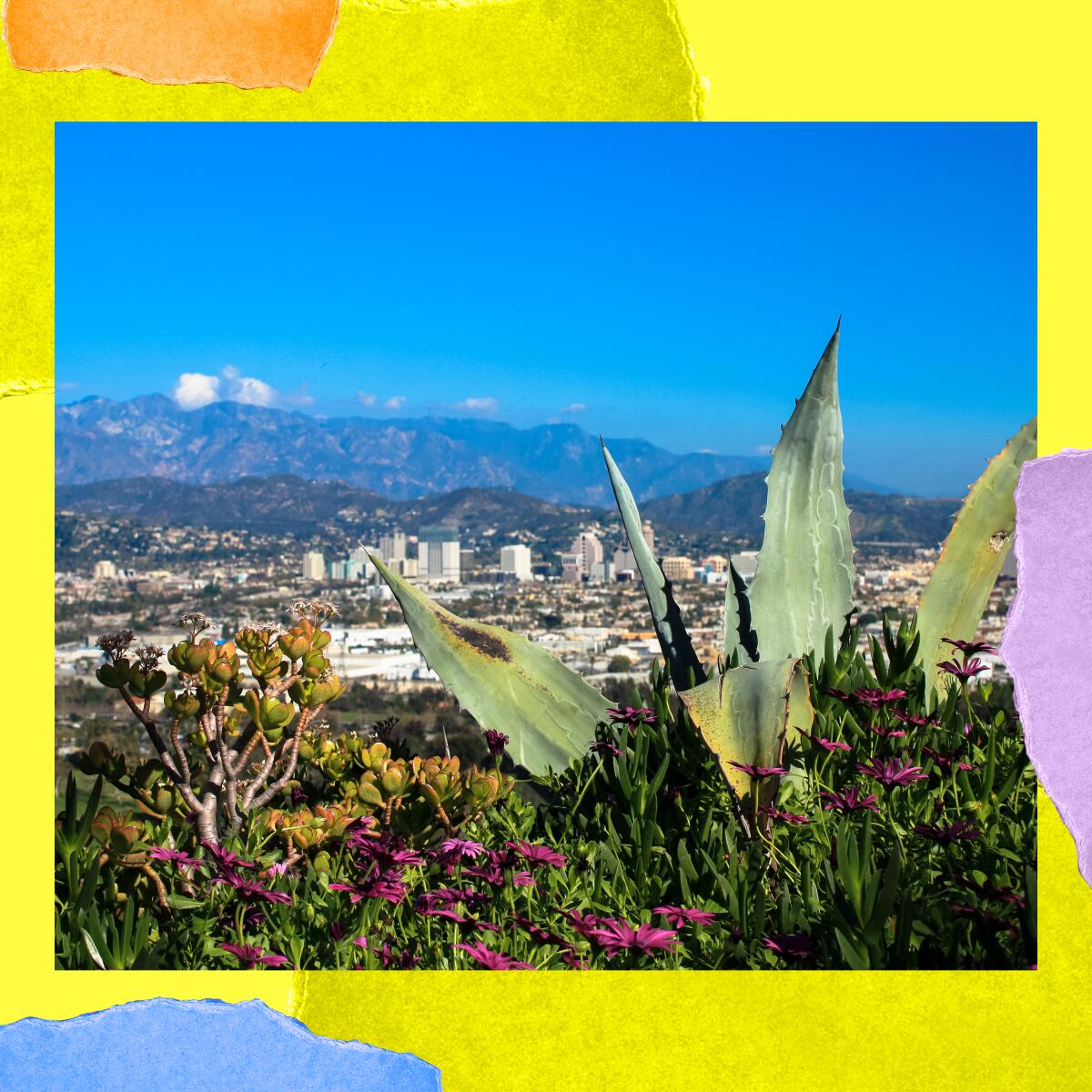
3. Hike to Amir’s Garden. Amir’s Garden is one of the most beautiful areas of Griffith Park, and its hand-built terraces and overlooks are a popular destination for hikers and explorers of all stripes. On Saturday, Dec. 17, the Gay and Lesbian Sierrans of the Sierra Club will trek into the garden and then explore the interior of the park, an area I find remarkably calm and quiet, especially compared with the more popular trails around the Observatory and Hollywood sign. The hike begins at the Ranger Station at 9 a.m. and should end by noon. RSVP, sign the required waiver and learn more about the hike here.
The must read
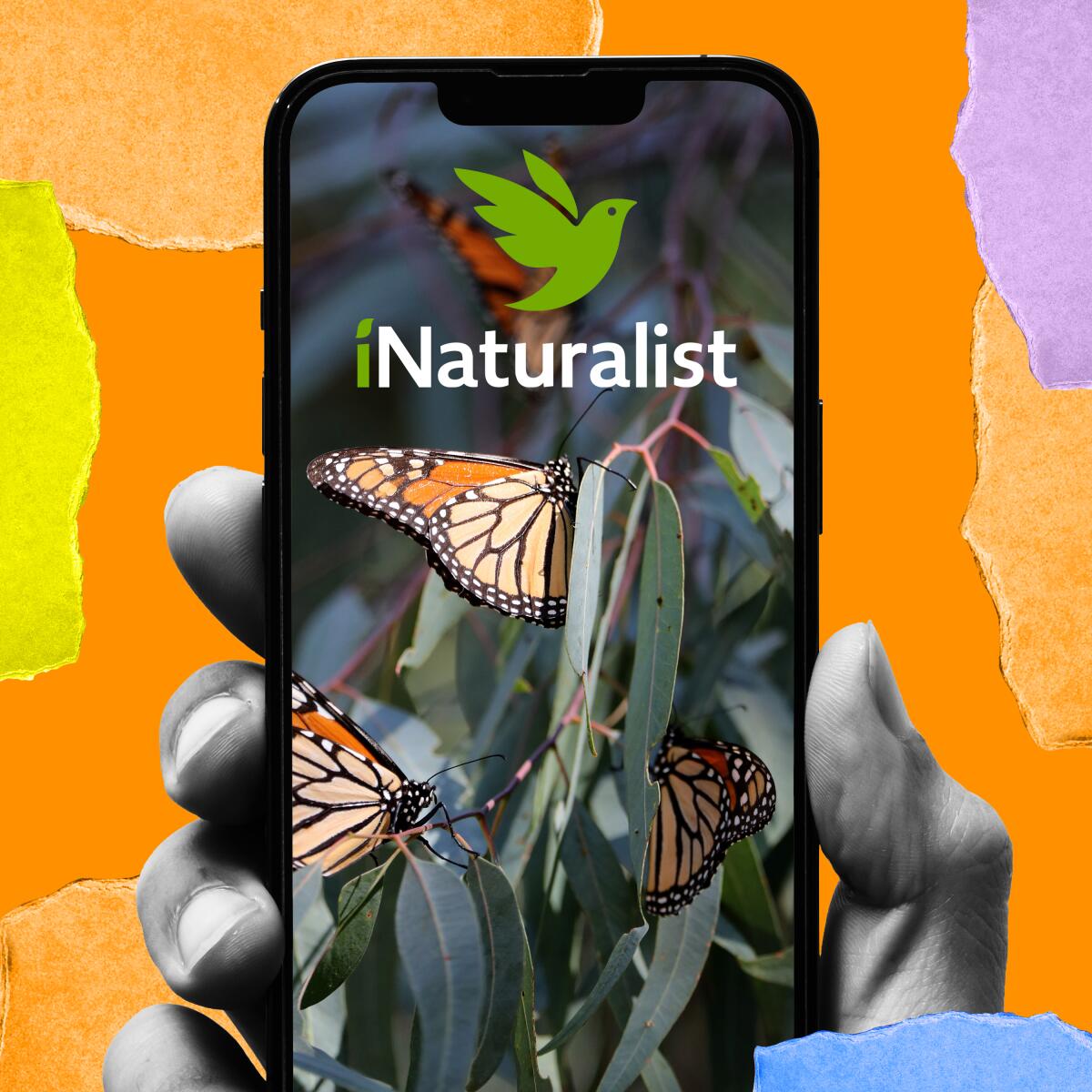
If you’ve been on social media for a while, you might find yourself asking, “Wait, why am I here again?” Whether it’s deleting spam comments on Instagram, evading outraged bots on Facebook or feeling like you might be participating in a complex data espionage program by watching a dance trend on TikTok, social media can sometimes feel like the worst parts of the internet concentrated. But that’s not true everywhere, says the New York Times’ Amy Harmon. Instead, she focuses on one of the nicest places online: iNaturalist, where strangers help identify photographs of living things. At its core, iNaturalist is not built on arguments and doesn’t reward inflammatory behavior. Instead, it focuses on small agreements that build toward truth. It’s one more reason to try out something that also happens to be one of my favorite free outdoor apps.
Check out “The Times” podcast for essential news and more.
These days, waking up to current events can be, well, daunting. If you’re seeking a more balanced news diet, “The Times” podcast is for you. Gustavo Arellano, along with a diverse set of reporters from the award-winning L.A. Times newsroom, delivers the most interesting stories from the Los Angeles Times every Monday, Wednesday and Friday. Listen and subscribe wherever you get your podcasts.
The red flag
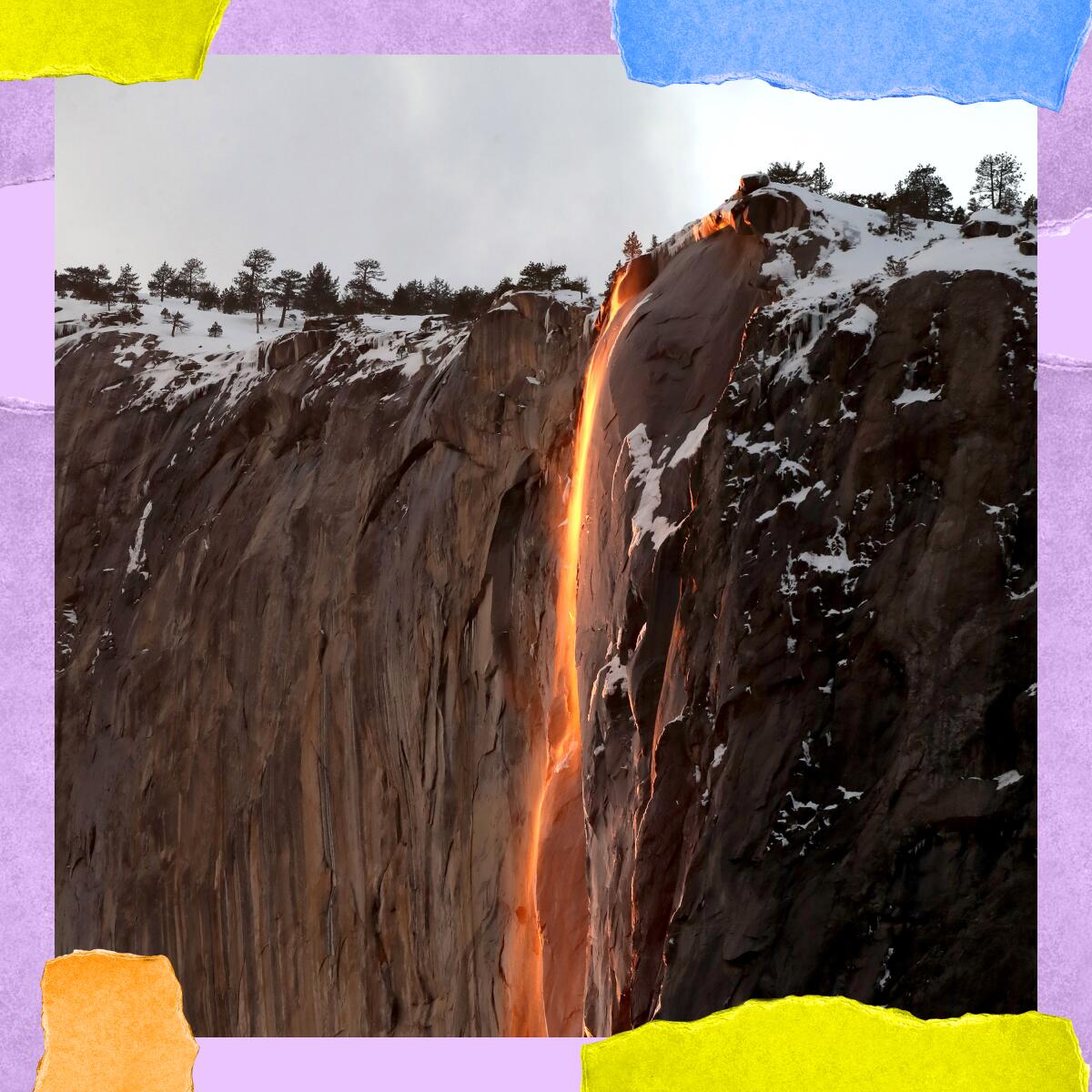
If you’ve been lucky enough to witness Yosemite National Park’s “firefall” phenomenon — when the setting sun backlights Horsetail Fall, making it look like fire — you know it’s one of the least solitary experiences you can have in the park. Well, Yosemite may have ended its summer entry permit pilot program earlier this year, but they’re firing the system up again for the last three weekends in February, which is when the firefall is most likely to be visible. Set your calendar alerts now: the day-use reservations will go on sale on Jan. 13, 2023, at Recreation.gov.
Cool stuff
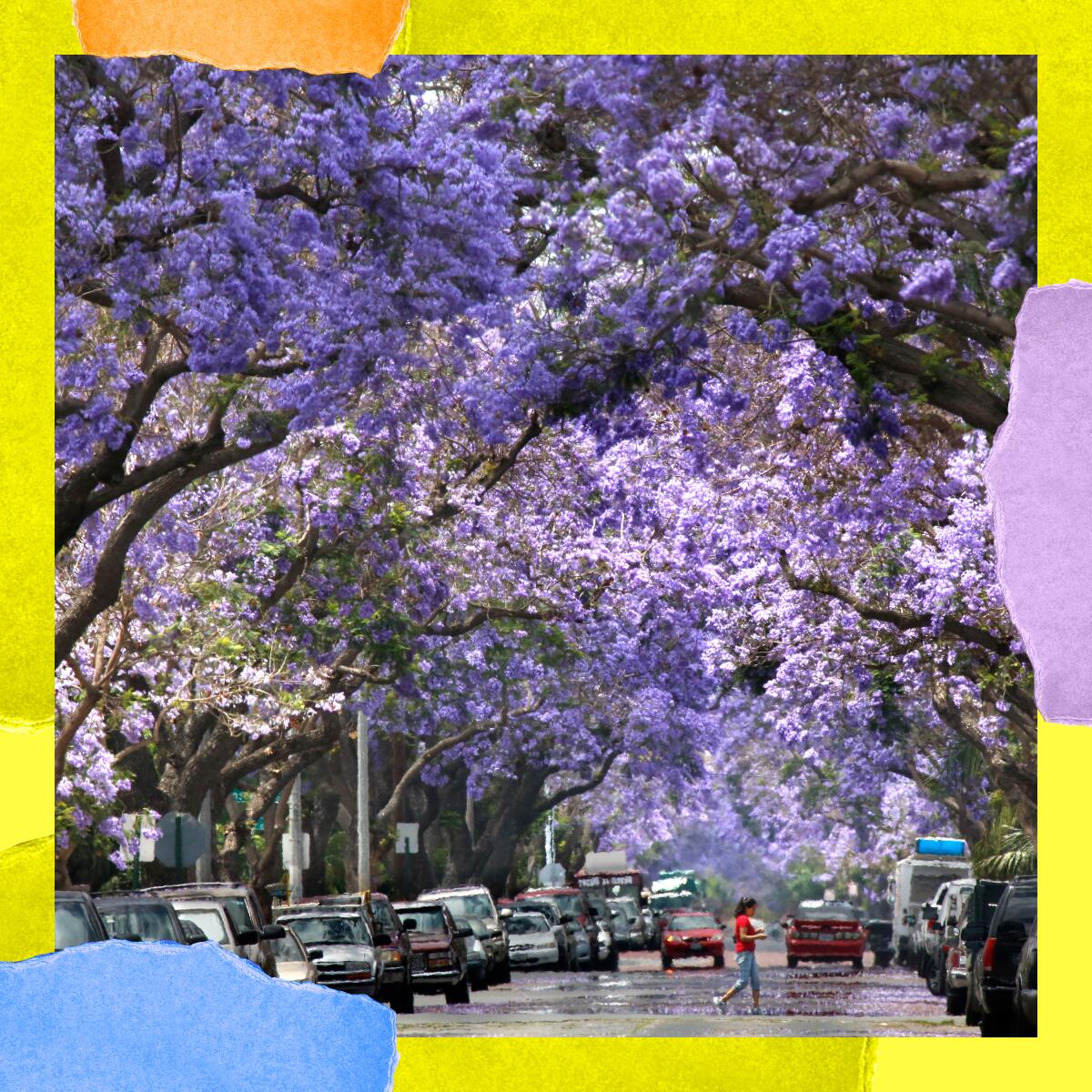
Some of us might argue that trying to put a monetary value on something like a tree is a sign of how addled we have become by the omnipresent illness of global capitalism. Others would say that quantifying the dollar amount of energy conserved by a tree is a way to persuade people who wouldn’t otherwise care to think twice about chopping trees down. Last week, New Yorkers got new ways to argue about this with a massive update to the New York City Tree Map, which was launched in 2016 to document the city’s urban canopy in a stunningly user-friendly interface. The update added more than 150,000 trees managed by NYC Parks and Recreation, so you can see that, say, the London planetree near the Central Park Boathouse provides $478.35 in annual benefits. You can also “favorite” trees to keep tabs on them and report a problem if you see one. How’s L.A. doing? Well, we got our first ever City Forest Officer back in 2019 (yay), but both Mayors Villaragosa and Garcetti fell very short on their respective tree-planting goals. We have a tree map, too, but it’s … well … I’ll let you do a side-by-side comparison.
Wild thing
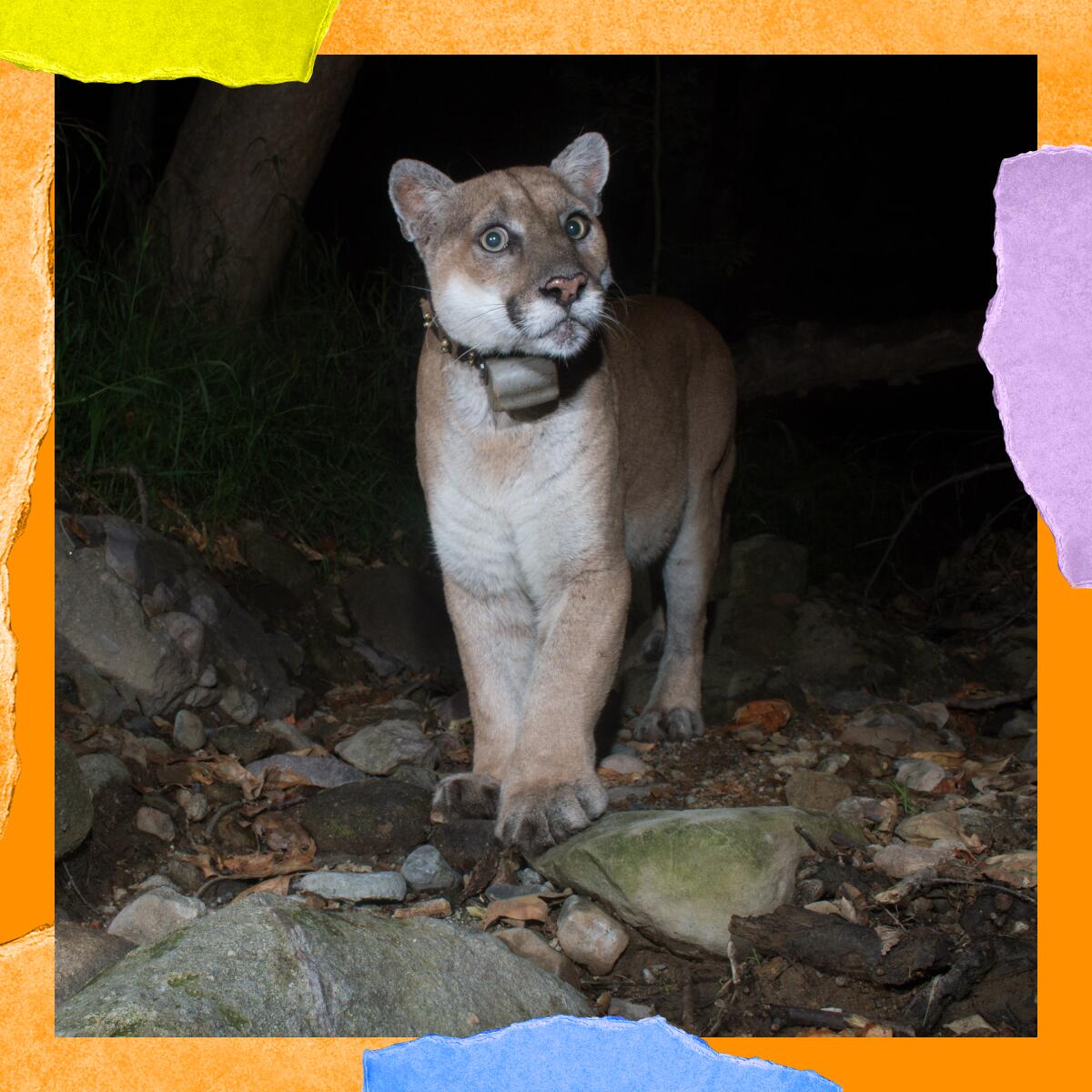
Last week, Beth Pratt, the California regional executive director of the National Wildlife Federation, posted an update about L.A.’s favorite urban mountain lion, Griffith Park’s P-22. The California Department of Fish and Wildlife and the Santa Monica Mountains National Recreation Area announced plans to capture P-22 to bring him in for a health evaluation following some recent erratic behavior that may be signs of distress. The puma was spotted and captured in Los Feliz on Monday, and unfortunately showed thinning hair, potential signs of mange, an eye injury from a vehicle collision and more. Biologists say it’s unlikely P-22 will be released back into Griffith Park.
Pratt notes P-22 is “a remarkably old mountain lion” — now the oldest tracked mountain lion in the Santa Monica Mountains — and that he “has lived for over a decade in the smallest known home range ever recorded for a male mountain lion.” While we wait to see what veterinarians determine is the best course of action, Pratt encouraged all of P-22’s fans to honor his legacy by supporting more wildlife crossings to ensure future wildlife has the habitat it needs to thrive. In “life goes on,” news, the NPS announced that three female mountain lion kittens born in the Santa Monicas this summer are in good health, and have been dubbed P-109, P-110, and P-112.
P.S.
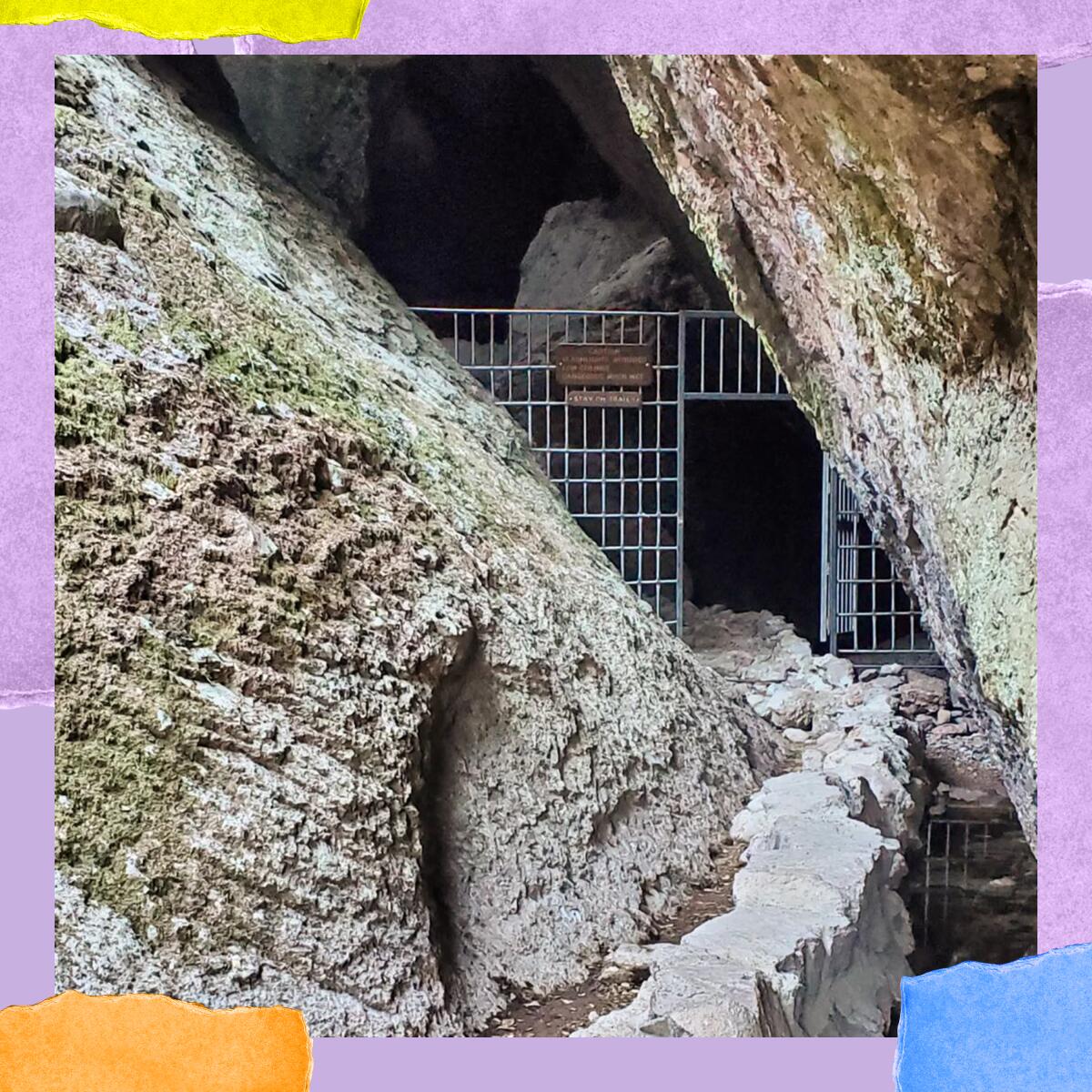
After being closed in the summer due to “extensive vandalism and graffiti” (boo), the beloved Balconies Caves just off the popular High Peaks Loop at Pinnacles National Park have reopened! Park staff cautions visitors that the Balconies Caves are a bit more rugged than the Bear Gulch Caves, and hikers should bring a lamp or flashlight, be prepared for some scrambling and tough terrain and be mindful of nesting bats inside the cave.
For more insider tips on Southern California’s beaches, trails and parks, check out past editions of The Wild. And to view this newsletter in your browser, click here.
Sign up for The Wild
We’ll help you find the best places to hike, bike and run, as well as the perfect silent spots for meditation and yoga.
You may occasionally receive promotional content from the Los Angeles Times.




